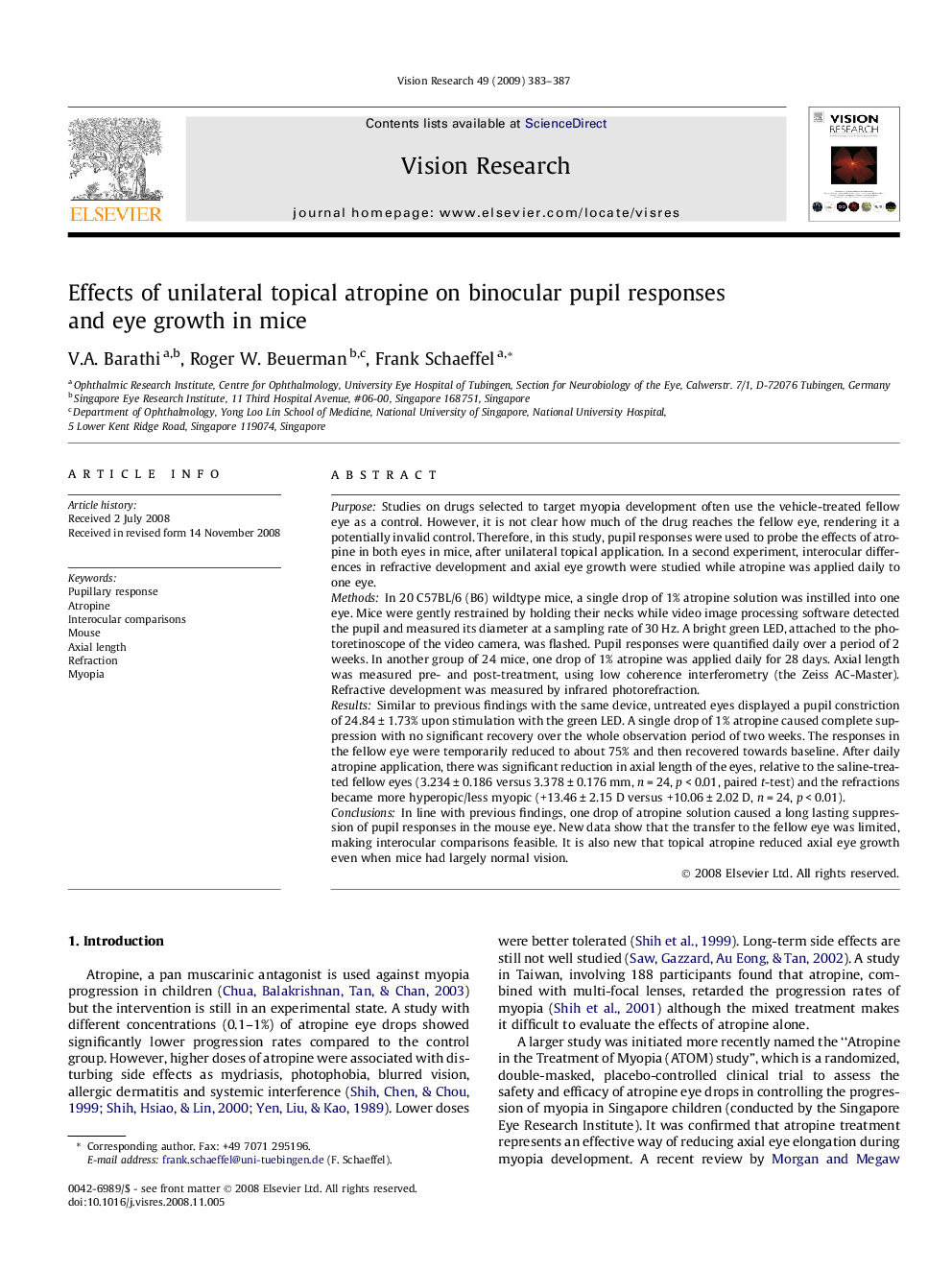| Article ID | Journal | Published Year | Pages | File Type |
|---|---|---|---|---|
| 4034814 | Vision Research | 2009 | 5 Pages |
PurposeStudies on drugs selected to target myopia development often use the vehicle-treated fellow eye as a control. However, it is not clear how much of the drug reaches the fellow eye, rendering it a potentially invalid control. Therefore, in this study, pupil responses were used to probe the effects of atropine in both eyes in mice, after unilateral topical application. In a second experiment, interocular differences in refractive development and axial eye growth were studied while atropine was applied daily to one eye.MethodsIn 20 C57BL/6 (B6) wildtype mice, a single drop of 1% atropine solution was instilled into one eye. Mice were gently restrained by holding their necks while video image processing software detected the pupil and measured its diameter at a sampling rate of 30 Hz. A bright green LED, attached to the photoretinoscope of the video camera, was flashed. Pupil responses were quantified daily over a period of 2 weeks. In another group of 24 mice, one drop of 1% atropine was applied daily for 28 days. Axial length was measured pre- and post-treatment, using low coherence interferometry (the Zeiss AC-Master). Refractive development was measured by infrared photorefraction.ResultsSimilar to previous findings with the same device, untreated eyes displayed a pupil constriction of 24.84 ± 1.73% upon stimulation with the green LED. A single drop of 1% atropine caused complete suppression with no significant recovery over the whole observation period of two weeks. The responses in the fellow eye were temporarily reduced to about 75% and then recovered towards baseline. After daily atropine application, there was significant reduction in axial length of the eyes, relative to the saline-treated fellow eyes (3.234 ± 0.186 versus 3.378 ± 0.176 mm, n = 24, p < 0.01, paired t-test) and the refractions became more hyperopic/less myopic (+13.46 ± 2.15 D versus +10.06 ± 2.02 D, n = 24, p < 0.01).ConclusionsIn line with previous findings, one drop of atropine solution caused a long lasting suppression of pupil responses in the mouse eye. New data show that the transfer to the fellow eye was limited, making interocular comparisons feasible. It is also new that topical atropine reduced axial eye growth even when mice had largely normal vision.
